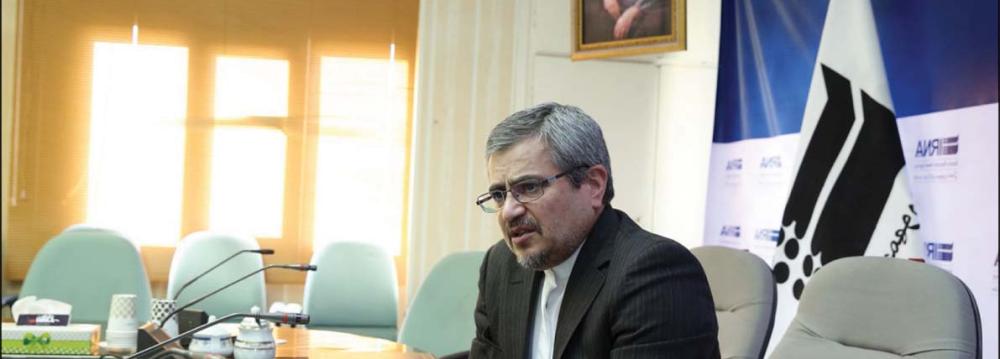Dozens of top scientists wrote to US president-elect, Donald Trump, on Monday to urge him not to dismantle the Iran nuclear deal, calling it a strong guarantee that Tehran's nuclear program will remain peaceful.
Iran denies claims that its nuclear activities may have military aspects, saying the program is only for civilian applications. This claim has been verified by the International Atomic Energy Agency.
"We urge you to preserve this critical US strategic asset," the letter read, according to the New York Times.
The 37 signatories included Nobel laureates, veteran makers of nuclear arms, former White House science advisers and the chief executive of the world's largest general society of scientists.
During the campaign, Trump called the Iran accord "the worst deal ever negotiated". In a speech to the American-Israel Public Affairs Committee, a pro-Israel lobbying group, he declared that his "No. 1 priority is to dismantle the disastrous deal" and argued that Tehran had outmaneuvered Washington in winning concessions and could still develop nuclear arms when the pact's restrictions expire in 15 years.
The letter was organized by Richard Garwin, a physicist who helped design the world's first hydrogen bomb and has long advised Washington on nuclear weapons and arms control. He is among the last living physicists who helped usher in the nuclear age.
The letter to Trump says its objective is to "provide our assessment" of the Iran deal since it was put into effect nearly a year ago. On Jan. 16, 2016, the IAEA, the technical body in Vienna that oversees the accord with teams of inspectors it has sent to Iran, gave its approval, saying Tehran had curbed its nuclear program enough to begin receiving relief from longstanding sanctions.
The letter writers zeroed in on the dismantling of Iran's ability to purify uranium, a main fuel of nuclear arms that is considered the easiest to use. They said Tehran, as agreed, had shut down roughly two-thirds of its whirling machines for enriching uranium, had exported more than 95% of the material it had enriched to 4% and had given up its production of uranium enriched to near 20%, which is much closer to bomb grade.
As a result, they said, the time it would take Tehran to enrich uranium for any single nuclear weapon "has increased to many months, from just a few weeks" during the accord's negotiation.
***No Surprise Breakout
Still, the letter writers seemed to anticipate quibbles on the point by saying the teams of inspectors and monitoring gadgets at Iran's main enrichment plant made them "confident that no surprise breakout at this facility is possible".
Breakout refers to a rush to build a nuclear weapon.
In summary, the letter said, the deal "has dramatically reduced the risk that Iran could suddenly produce significant quantities" of material for making nuclear arms.
While the deal was opposed by all Republicans in the House and Senate, it is not clear that Trump would move quickly to renege on it. Any effort by the United States to walk away from its terms, or to renegotiate it, would open the way for Iran to insist on changes as well.
The agreement has been controversial in Iran, where opponents of President Hassan Rouhani have argued that the promised economic benefits have come far too slowly. Rouhani is facing an election in coming months, and if Trump dismantled the deal, it could give his opponents an argument in favor of ousting his government.
Moreover, Trump's nominee for defense secretary, James Mattis, is likely to counsel against abandoning the deal, according to officials who have discussed it with him. It is unclear what Rex Tillerson, the chief executive of Exxon Mobil and the nominee for secretary of state, would advise.
Trump's choice for national security adviser, Michael Flynn, the retired head of the Defense Intelligence Agency, has been a major critic of the deal. In June 2015, just before the final agreement was struck, he told a congressional committee that Iran was almost certainly hiding facilities.
Many of the 37 signatories were among the 29 who praised the accord in a letter to President Barack Obama in August 2015, a month after the deal was signed and sharp public debate had begun on its merits.
Others who signed the new letter include Siegfried Hecker, a Stanford professor who, from 1986 to 1997, directed the Los Alamos weapons laboratory in New Mexico, the birthplace of the bomb.
Rush Holt, a former congressman and nuclear physicist who now heads the American Association for the Advancement of Science, also signed.
Sidney Drell, a Stanford physicist who advised presidents from Nixon to Obama, signed the letter before dying late last month at 90.


